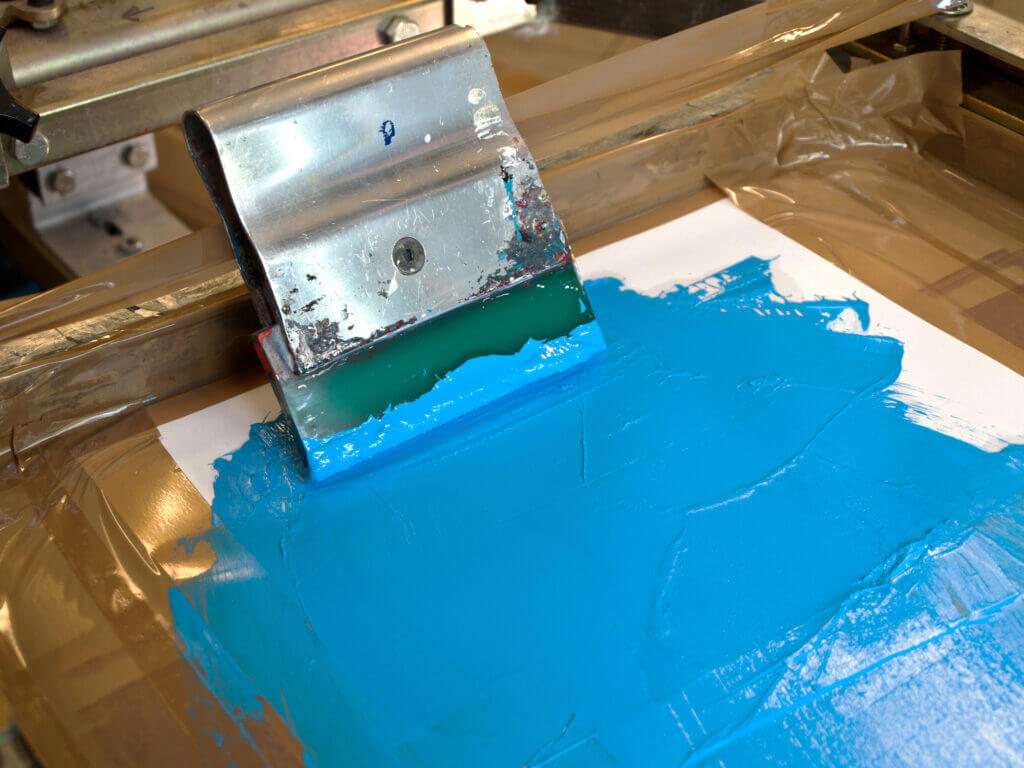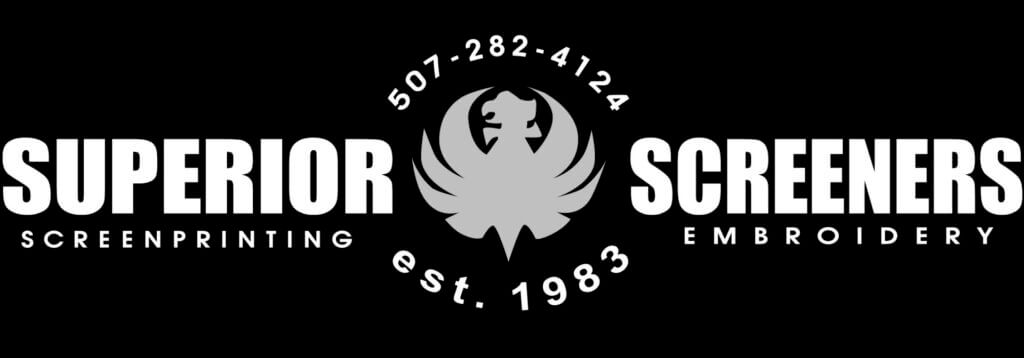Understanding the Basics of Each Method
Screen printing is a technique where ink is pushed through a mesh screen directly onto the fabric. It’s been a staple in the printing industry for decades and is known for its ability to produce bold, vibrant designs. This method is often favored for larger graphics, logos with multiple colors, or when printing on lightweight fabrics like t-shirts or tank tops.
Embroidery, on the other hand, involves stitching a design directly into the fabric using thread. This method creates a textured, dimensional look that is commonly associated with professionalism and durability. Embroidery works especially well for smaller designs like chest logos, names, or emblems, and is most commonly used on polos, jackets, hats, and other thicker or structured garments.

Appearance and Aesthetic Considerations
One of the most noticeable differences between screen printing and embroidery is how each design looks and feels. Screen printed designs tend to be smooth and flat against the fabric. Because ink can be layered and blended, this method is excellent for producing full-color artwork, gradients, and detailed illustrations. The final product maintains the softness of the garment, which makes screen printing an ideal option for casual or comfort-focused apparel.
Embroidery offers a different kind of visual appeal. The raised, stitched look of embroidery adds texture and a level of sophistication that screen printing doesn’t provide. Embroidered logos appear more polished and professional, which is why they are often used in corporate or uniform settings. The tactile nature of embroidery can elevate the perception of the brand, making it seem more established and premium.
Durability and Longevity
Both screen printing and embroidery offer excellent durability, but they hold up differently over time depending on the usage and garment type. Screen printing, when done correctly with high-quality inks, can last through many washes without fading or cracking. However, excessive heat from washing or drying, as well as regular wear and tear, may eventually cause the print to degrade.
Embroidery is often considered the more durable of the two. Because the design is stitched into the fabric, it can withstand repeated washing and heavy use without losing its structure or color. This makes embroidery a go-to for uniforms, workwear, and apparel that’s meant to be worn regularly or in tough conditions. It’s especially ideal for hats, jackets, and bags where a printed design might not hold up as well.
Cost and Order Size Considerations
Cost is often a deciding factor when choosing between screen printing and embroidery. Screen printing is generally more cost-effective for large orders, especially if the design uses just one or two colors. The cost per item decreases as the order size increases, making it a great option for bulk orders like event t-shirts, giveaways, or promotional items.
Embroidery tends to have a higher upfront cost due to the digitization process, which converts your logo into a format that embroidery machines can read. Additionally, pricing is often based on stitch count rather than the number of colors, which means complex or large designs may cost more. However, embroidery doesn’t usually have the same minimum order requirements as screen printing, making it a good fit for small quantities where a professional finish is needed.
Garment Compatibility and Versatility
The type of garment you’re customizing also plays a role in choosing the right decoration method. Screen printing works best on flat, smooth surfaces like cotton t-shirts, sweatshirts, and lightweight hoodies. It’s perfect for soft apparel that will be worn casually or in relaxed environments.
Embroidery excels on structured garments like polos, jackets, hats, and bags. These items benefit from the durability and professional appearance of stitching. Embroidery also allows for placement on areas that can be difficult to print on, such as the side panel of a hat or the chest of a heavy-duty work jacket. While it can technically be done on lighter fabrics, embroidery may weigh down the material or cause puckering, so it’s better suited to thicker textiles.
Branding and Use Case Scenarios
Environmental and Production Considerations
Sustainability may also factor into your decision. Screen printing traditionally uses plastisol inks, which contain PVC, though there are more eco-friendly water-based inks available today. Some printers, including Superior Screeners, are moving toward greener processes by using better ink and more efficient practices.
Embroidery is generally seen as low-waste since it involves only thread and minimal material waste. However, it can use more energy due to the machinery and longer production times per item. Ultimately, both methods can be eco-conscious depending on the production partner you choose and the materials used.
Making the Right Choice
There’s no one-size-fits-all answer when it comes to choosing between screen printing and embroidery—it really depends on your project. Consider what matters most to you: budget, appearance, garment type, and overall impression. If you’re going for high volume, bold graphics, or soft, wearable apparel, screen printing is likely the way to go. If you want durability, a professional finish, or you’re decorating structured garments, embroidery may be the better fit.
At Superior Screeners, we offer both services in-house and are happy to walk you through the pros and cons based on your specific needs. We’ve been helping businesses, schools, teams, and nonprofits in Rochester, MN for over 40 years—and we’re here to help you make the best choice for your brand.
Get in touch today to start your custom order, or explore our screen printing and embroidery services to learn more.

